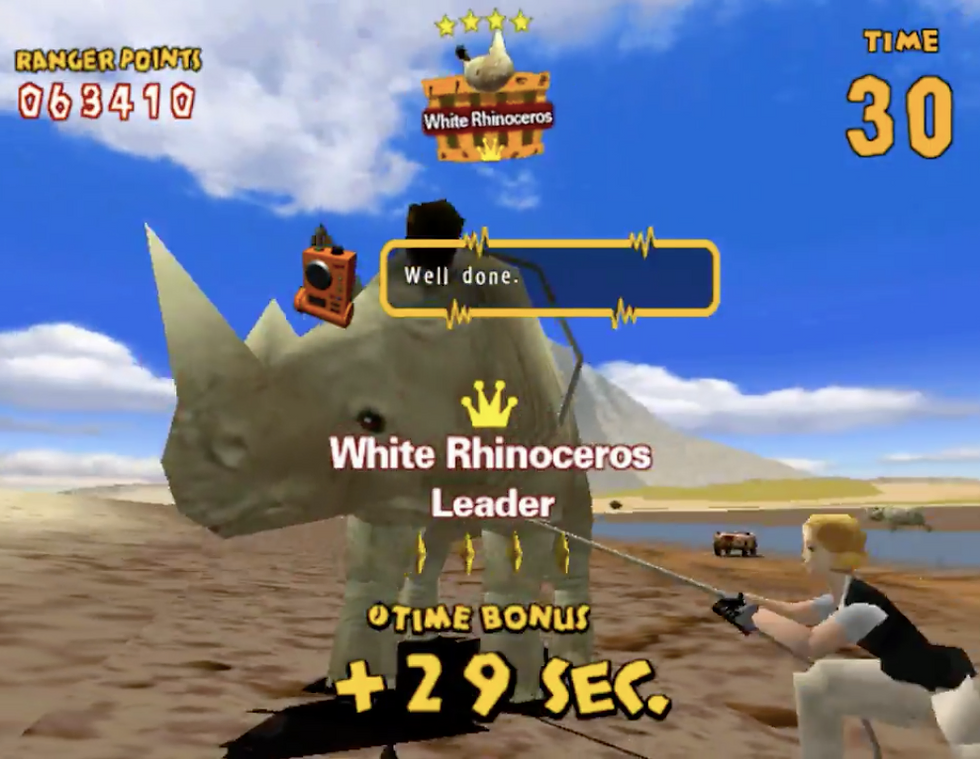 Jambo! Safari running on our Sega Naomi arcade might initially seem like a simple racing game with an African theme. However, there’s much more depth to it. Surprisingly, even though the game is well known, you’ll find very little footage of high-level play online. This post will cover the arcade release, and although some parts will overlap with the other releases there are notable differences. Also, I will not go too in-depth into the basics after the short introduction below as you can easily find a video or general post about the game.
Jambo! Safari running on our Sega Naomi arcade might initially seem like a simple racing game with an African theme. However, there’s much more depth to it. Surprisingly, even though the game is well known, you’ll find very little footage of high-level play online. This post will cover the arcade release, and although some parts will overlap with the other releases there are notable differences. Also, I will not go too in-depth into the basics after the short introduction below as you can easily find a video or general post about the game.
What is jambo Safari
Released by Sega in 1999, Jambo! Safari is an arcade game built on the Naomi board—hardware based on Sega’s Dreamcast console. In this game, you control a jeep using a steering wheel and gear shift to chase down animals and capture them with a lasso. You can choose from four different characters for in the vehicles.
Your final score depends on:
- The star rating of the animal you capture.
- The time remaining at the end of each stage.
- Completing the game without restarts.

Pro tips
- Animal Multipliers: Capturing the same animal more than once reduces its point value with each additional capture. Efficiently rounding up animals can boost your overall score.
- Focus on High-Star Animals: Although lower-star animals appear first, the higher-star ones are more hidden. Prioritize these for better points.
- Stage One: Head to the right/back area to find 5‑star gnus. Also, since capturing the leader Brindled Gnu doesn’t offer much benefit, opting for a non‑leader can be more efficient.
- Boss Stage Tactics: As soon as the green circle appears, throw your lasso immediately for a near-certain capture. If the target begins to flee, boost right away—its speed exceeds your normal pace.
- Watch Out for Aggression: The Elephant, Black Rhinoceros, and Lion will attack your jeep once they are targeted.
- Ranking Strategy: Since overall rankings depend on the total ranger points from each stage, earning an S‑rank in Embamba Plains is crucial for meeting the requirements in Shetani Riverside.

Strategy
I suggest starting by capturing as many Brindled Gnus as possible, then following the same strategy with the Cheetahs, and finally ending the level by catching the Okapi (the animal marked with a “?”). In the second special stage, maintain high speed while focusing on the leader rhino. In the third stage, aim to capture multiple Lionesses, Black Rhinoceroses, and African Elephants, finishing with the Lion Leader. Achieving an S Rank in all stages will unlock the true final boss, Phororhacos, which behaves like a lion when caught quickly.
Here you see a full list of all Animals:
- P: Base points.
- P Leader: Additional points for the leader (marked by a crown).
- B: Time bonus.
- B Leader: Extra time bonus for the leader animal.

Side quests
Side quests in this game reward you with time bonuses rather than extra points. In my experience, the Naturalist Embamba Plains quest is particularly worthwhile since it appears early and is relatively straightforward. After passing Grant’s Zebras and Reticulated Giraffes, you’ll encounter a naturalist on a island who has lost his eyeglasses because a monkey stole them from a tree. Interestingly, if you hit the tree at low speed, the glasses break; if you hit it at full speed, they remain intact.
| Passed | Failed | |
| Naturalist Embamba Plains | 35 | 3 |
| Poacher Hans | 25 | 0 |
| Naturalist Shetani Riverside | 25 | 0 |
| Villager | 35 | 0 |

Next time you hit the cabinet, see if you can uncover all its hidden layers.

















